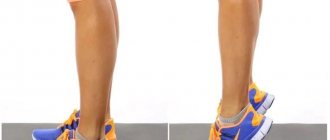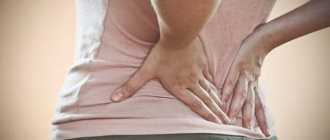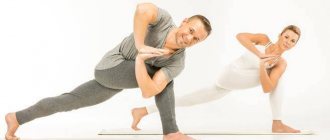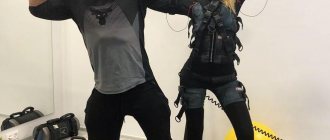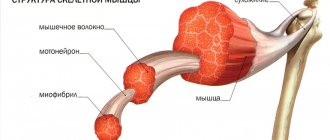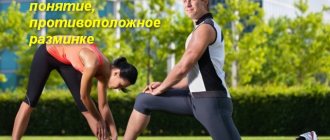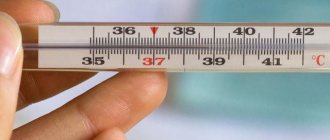A standard mistake for beginners or those who are in a hurry to build muscle mass for the beach season is skipping the recovery periods that are included in any training plan. Many people think that rest is unnecessary, and training without recovery periods (this can be one day a week or longer periods, alternating with intense training) will quickly lead to the desired result. However, this mistake can cost you all your efforts, since muscles are damaged during training and this is natural. Just like the period required for their recovery, after which they are ready to withstand even greater stress.
How to recover from heavy strength training as quickly as possible? There are 4 simple and natural ways.
©photo
Peter Cavrell, fitness trainer and creator of Sixpackfactory.com, shares his secrets to recovery from exercise.
Cold baths
I don’t know why, but since school my physical education teacher advised me to take a hot bath at home after hard workouts (not immediately, of course, but after a while). This was supposed to make my unenviable fate easier the next day. But I can’t say that it helped much. Peter Carvell, on the contrary, advises taking a cold bath rather than a hot one. Previously, most sports clubs had separate pools with cold water, which you could plunge into immediately after training. Why cold water? Because it reduces inflammation in muscles after strength training. The fewer inflamed areas, the less “repair work” the body needs to perform to recover. This works in much the same way as a cold compress or ice, which is recommended to be placed on the site of a sprain or sprain. Therefore, a cold bath (not ice, but just cold water that flows from a cold tap) for 10-12 minutes will be enough to reduce your recovery time by 50% and reduce the painful sensations of soreness by 40%.
How to relax and restore your body after a workout
To make the training process comfortable and pain-free, it is important to fill your diet with the correct ratio of protein, carbohydrate and plant foods. Do not load your muscles with heavy weight without prior preparation; exercise regularly, evenly distributing the load on the body.
How to avoid mistakes when taking a bath to restore your body after a workout:
- Perform dry preparation - use a brush to wipe the legs, arms, chest, stomach, back, to create drainage in the lymphatic system.
- Add epsom salt to the bath, which saturates the water with vitamins, minerals and magnesium.
- A few drops of lavender essential oil will calm the nervous system, relieve tension in the body, and reduce stress and anxiety.
- Add foam based on herbal ingredients - bubbles will slow down the decrease in temperature, providing a comfortable environment throughout the entire session.
- When taking a bath, it is recommended to relax, get rid of anxious thoughts, turn on relaxing music, affirmations, and dim the lights. Constant practice will allow you to master meditation.
After a bath, it is advisable to relax, lie down, and, in order to suppress your appetite, eat light buckwheat or oatmeal porridge, a salad of vegetables and fruits, diet cookies, and crispbread. To replenish your diet with proteins - fermented milk products, eggs, lean meat, steamed fish.
Food
So you've just torn apart your muscles, like a construction company removing walls from an old building to build new ones. Now you need the right “bricks” to build a strong and beautiful house. Therefore, you need the right products that contain all the substances necessary for construction. First of all, these are, of course, proteins. If you eat enough calories and protein, your muscles will grow faster. Therefore, after a workout, the ideal option would be a protein shake combined with simple carbohydrates, which help proteins reach their destination faster.
Placebo or benefit?
Why do professional athletes take ice baths? Is an ice bath really beneficial? Experts have not yet reached a consensus. On the one hand, coaches who practice using an ice bath believe that it actually increases athletes’ performance by 5-10%, which is important in competition conditions. On the other hand, opponents of using an ice bath point out that stress after training is already high, as a result of which the risk of getting sick when using this procedure increases significantly.
Let's take a closer look at both positions.
| Behind | Against |
| Ice bath removes lactic acid from muscles | Under the influence of cold, the acid only denatures, which relieves pain, but does not remove the substance from the body. |
| An ice bath can temporarily improve an athlete's performance | In fact, the thermal effect only provokes the release of adrenaline, which for a while actually improves the results, but with constant use the body gets used to the cold, which reduces the effectiveness of the bath. |
| Ice bath tones muscles | Cold can cause muscle cramps. |
| Ice bath speeds up post-workout recovery | It is possible to develop pain in the joints, which will not allow you to train even in the case of complete muscle recovery. |
Massage
At the beginning of his sports career, Peter worked as a sports massage therapist and helped athletes recover from strength training 6-8 hours a day. Proper muscle massage helps remove toxins, increases flexibility and speeds up the delivery of nutrients to the right places. And, as a result, the body’s recovery is faster and less painful, and athletes become more flexible and suffer fewer injuries.
A quality massage at least once a week is not always available. Therefore, you can get out of this situation by massaging yourself with a simple foam roller (or a more familiar wooden roller massager) in the main areas (upper thighs, lower back, buttocks, etc.) for 5-10 minutes.
Baths[edit | edit code]
Fresh water bath (hygienic)
at a temperature of 36-37 °C. Use during the sauna or after training. The duration of shared baths is 10-20 minutes. After a bath, it is recommended to take a rain shower (temperature 33-35?) for 1-2 minutes.
Hot bath
with water temperature 38-40 °C. Used by swimmers during training in an outdoor pool, cross-country skiers, and speed skaters when there are obvious signs of hypothermia. The duration of the procedure is 5-10 minutes.
Contrast baths.
They have a positive effect on the cardiovascular and nervous systems. They are usually used during a sauna, as well as for the purpose of hardening, to prevent colds. The temperature difference should be at least 5-10?C. First, the athlete is in a warm bath (2-5 minutes), and then in a cold one (1-2 minutes). The transition from one bath to another can be repeated 2-5 times.
Vibrating bath
(exposure to mechanical vibration in water). Using the “Volna” apparatus, waves are created in the bath. They can be dosed by pressure (from 0 to 10,000 bar) and frequency (from 10 to 20 Hz) depending on the athlete’s sensations. The vibration should be strong enough, but at the same time not cause discomfort. Vibration baths are carried out at a water temperature of 30-38 °C for 5-10 minutes, 1-2 times a week, usually after the second workout (for two-time workouts).
Hyperthermic baths
(general, sessile and leg) with a water temperature of 39-43 °C. Used to normalize the function of the musculoskeletal system (with “clogged” muscles, myalgia, myositis, etc.) in order to prevent overloads and injuries. More often, hyperthermic baths are carried out with various medicinal additives. The duration of the procedure is 5-7 minutes.
In the autumn-winter period, as well as at general physical training training camps, after training it is necessary to include stretching and relaxation exercises. After such a “hitch” it is advisable to take a bath.
Sitz hyperthermic baths are carried out for preventive and therapeutic purposes.
Hyperthermic foot baths
Prescribed to runners and jumpers, especially during general physical fitness training. They are especially recommended for runners and walkers. The duration of the procedure is 5-10 minutes, the water temperature is 39-41 °C, 8-10 procedures per course. Observations have shown that carrying out preventive courses helps reduce exacerbations of old injuries and diseases.
Contraindications to hyperthermic baths
: severe fatigue, overwork; ECG changes; acute injuries; swelling; increased vascular permeability.
Galvanic bath for limbs.
Used for inflammatory and post-traumatic conditions of the musculoskeletal system, muscle cramps, and nervous diseases. Accelerates regenerative processes, reduces pain, relieves muscle spasms, normalizes metabolic processes, etc.
Electrically vibrated.
Simultaneous combination of exposure to warm water (35-37 °C) and galvanic current (current strength from 0.1 to 1.5 A). They use low voltage current (24 V) at nine positions indicated on the control panel. The strength of the current depends on the sensitivity of the neuromuscular system. The duration of the procedure is 15-35 minutes. There are 3-5 procedures per course. During the procedure, the athlete experiences a slight tingling sensation and slight vibration.
The vibrating bath helps accelerate oxidative-metabolic processes, remove metabolic products (lactic, pyruvic acids, urea, etc.), significant muscle relaxation, relieves pain in the muscles, helps accelerate adaptation to mid-altitude, normalizes sleep, etc.
On the rest day, a general effect on the athlete’s body is carried out.
To relieve local muscle fatigue, the following scheme is recommended.
- For runners, walkers, all-around athletes - impact on the area of the feet, legs and hips - positions 3, 6.
- For sprinters and hurdlers - impact on the muscles of the feet, legs, thighs, long back muscles - positions 6, 3, 4.
- For jumpers - impact on the muscles of the legs and feet - position 6.
- For throwers - impact on the area of the shoulder girdle, back - position 4. During the procedure, the direction of the current is changed 1-2 times, which is achieved with a special switch.
Sodium chloride bath
. Used for “clogged” muscles, pain in joints and muscles, after training on hard ground, or training on exercise machines. 1.5-2.0 kg of table or sea salt is dissolved in the bath. A “salt cloak” forms on the surface of the skin, which irritates the skin receptors. The duration of the procedure is 10-15 minutes. Water temperature - 35-37 °C.
Alkaline bath.
200-300 g of baking soda are dissolved in the bath. Water temperature - 36-37 °C. The duration of the procedure is 5-10 minutes.
Sulfur bath.
Helps normalize the central nervous system and stop bleeding. Used for skin diseases, muscle pain (especially of rheumatic origin), diseases of the spine (osteochondrosis, etc.). Water temperature is 34-36 °C. The duration of the procedure is 10-20 minutes. Use the bath twice a week. For a course of treatment - 10-12 baths. It is not recommended to take a shower after a bath. Rest is required - 20-30 minutes. Package composition: purified sulfur, horse chestnut extract, pine needle oil, camphor, salicylic acid, sodium sulfate, potassium sulfate, sodium chloride, magnesium sulfate, aluminum salicate.
Gubbard's bath.
In all four corners of the bottom of the butterfly-shaped bath there are nozzles, adjustable in height and direction, which allow the use of a whirlpool bath. Water pressure (from the pump) - 0-39 MPa. The Gubbard bath is used for therapeutic general or partial massage with a stream of water under water. You can perform a local massage using a massage tip, or a whirlpool massage by directing a stream of water into the whirlpool massage nozzle.
Aromatic baths.
These include conifers, sage, etc. The effect of such baths is based on the skin-irritating effect of the substances contained in the solution (essential oils, astringents, etc.) and the temperature factor.
To prepare baths, various medicinal herbal decoctions (sage, chamomile, pine needles, etc.) are used. There are ready-made forms (pine briquettes, bags of sea salt, etc.).
To restore and improve the performance of athletes, therapeutic baths are used, the parameters of which are given in table. 2.
Table 2. Parameters of therapeutic bath procedures used to restore and improve the performance of athletes
(Gigineishvili G.R., 1998)
| Therapeutic bath | Concentration of the chemical ingredient included in the bath | Bath temperature exposure duration |
| Contrast bath | Hot bath 40 °C. cold 20 °C. Exposure in a hot bath for 25-30 minutes, in a cold bath for 1 minute. only 4-6 transitions from one bath to another | |
| Bath of “white emulsion” turpentine | The first bath contains 15 ml of “white emulsion” of turpentine per 200 liters of water, with each subsequent bath 5 ml are added until a distinct burning sensation appears. Maximum content 40-55 ml | 37-39 °C. 10-15-20 min |
| Bath of “yellow solution” of turpentine | The first bath contains 15 ml of a “yellow solution” of turpentine per 200 liters of water; with each subsequent bath, 5 ml are added until a distinct burning sensation appears. Maximum content 45-63 ml | 38-40 °C. 10-15-20 min |
| Mixed turpentine bath | The first bath contains 5 ml of “white emulsion” and 10 ml of “yellow solution” of turpentine, with each subsequent bath the concentration of turpentine is increased, the maximum content of “white emulsion” is 20 ml. “yellow solution” - 20-35 ml | 38-40 °C. 10-15-20 min |
| Pine bath | 70-100 mg of pine powder, or 1-2 tablets of pine extract, or 100 ml of liquid pine extract per 200 liters of water | 36-38 °C. 10-15 min |
| Sodium chloride bath | 10-33 mg/l sodium chloride (respectively 2-4-6 kg per 200 l of water | 36-37 °C. 12-15 min |
| Iodine-bromine bath based on sodium chloride | 10 mg/l sodium iodide. 25 mg/l potassium or sodium bromide. 10 mg/l sodium chloride | 36-37 °C. 10-12-15 min |
| Carbon dioxide water bath | 0.8-1.3 g/l carbon dioxide | 32-34 or 36-37 °C. 7-12 min |
| Carbon dioxide bath “dry” | Carbon dioxide flow in the bath 10-20 l/min | 32-34 or 36-37 °C. 10-15 min |
| bubble bath | Through a system of metal pipes with holes, air is supplied to the bath under a pressure of 0.5-1.5 atm | 24-36 °C, 10-12 min |
Dream
And the last, but almost the most important item on this list is sleep! Enough sleep! Studies have shown that during sleep the body recovers faster due to the synthesis of protein and growth hormone. In addition, healthy sleep restores normal brain function and this helps you stay alert while preparing for competitions or particularly difficult training sessions. The ideal amount of sleep is the standard 7-8 hours. And don’t neglect this point, as your lack of sleep will subsequently affect the results of your workout.
How to take it correctly?
How to take an ice bath correctly so as not to harm your health and increase the effectiveness of the training process?
Follow simple rules:
- The water should be at room temperature (15-20 degrees Celsius), tap water is suitable for this.
- Without preliminary hardening, staying in an ice bath for more than 5-7 minutes is not recommended due to the risk of getting a cold. Even if you are seasoned, using a bath for more than 20 minutes is not advisable.
- There should be a lot of ice - about 20-40% of the water mass. Prepare it in advance by pouring it into special forms and placing the water in the freezer.
- It is better to immerse only muscle groups that worked during training in an ice bath, i.e. It is not located entirely, but only the legs/arms are immersed.
- Before taking an ice bath, it is better to consult your doctor about the dangers of using it in your case.
- You should take an ice bath no later than half an hour after training, while lactic acid is not yet so intensely affecting the recovery processes.
How to relieve muscle pain after training with massage?
If you don’t know how to relieve muscle pain after a workout, use the services of a professional massage therapist. Here you get a real "combo":
- The muscles will relax;
- The skin will become more toned and elastic, cellulite will disappear completely in a few months.
A massage therapist is one of the best “medicines” after difficult training. If you don’t have enough money or time for a professional, ask your loved one to stretch you in the evening or do a massage yourself; fortunately, there are many devices available on the market that allow you to thoroughly work out your body.
Brief summary
For different sports and different loads, different variations of the ice bath have been developed. Let's look at all the available data in the table.
| Muscle group | Load intensity | Dive Features | Potential Harm | Benefit |
| Legs | Any | You only need to immerse your legs to the ankles, in rare cases – to the middle of the quadriceps. The water should be at a moderate temperature -10-15 degrees Celsius. The percentage of ice content in the liquid is no more than 25%. |
The duration of the procedure depends on your strength. It is not recommended to spend more than 15 minutes.
How to avoid muscle pain after exercise
The best thing, of course, is simply to prevent pain from occurring. The simplest and most effective way to avoid pain after exercise is to approach your workouts wisely. You shouldn’t overload your muscles at the very first lesson: experienced trainers at The Base club advise increasing the load little by little, constantly adjusting its duration and intensity. In addition, never waste time on warming up and cooling down.
Warm-up
This is a necessary element of any workout, reducing the risk of injury, warming up the muscles, reducing their stiffness and relieving the athlete of pain after exercise.
Contrast shower rules
In order for a contrast shower to bring maximum benefit and pleasure, you need to follow simple rules.
You should always start with warm water - this will give you the opportunity to warm up properly (the skin will acquire a pinkish tint), and the subsequent flow of cold water will not bring negative emotions. Gradually increase the temperature to hot (but not to boiling water - no need to scald yourself!), Switch to cold water.
The greater the temperature difference, the greater the stress, and, accordingly, the effect on the body. But if you are new to this business, it is better to start not with cold, but with slightly cool water. The temperature can be gradually reduced. The time spent under hot water should be longer than under cold water. From the very beginning, you can simply pour yourself a cold shower, and then immediately return to hot water.
Over time, you will be able to stand under cold water longer. For example, you can practice the following scheme: you stand under hot water for 30 seconds, then 5 under cold water. Then the time spent under cold water can be increased. How do you know when it's time to switch to hot again? Try to prevent goosebumps from appearing - because this means that the body is cooling down and trying to retain heat. During a contrast shower you should not freeze.
Usually it is enough to complete three water change cycles - that is, stand under a hot stream three times and three times under a cold stream. It is better to finish the procedure with cool or warm water, and then rub with a towel. It is important to remember about contraindications: you should not take such a shower during colds or inflammatory diseases, with high blood pressure, problems with the cardiovascular system, or during menstruation.
How to understand that the contrast shower procedure was carried out correctly? After it you should feel good and be in a good mood!
In the evening, before going to bed, a warm shower is more suitable. It calms you down and helps you fall asleep. In the evening, various products are used to cleanse the skin and hair. It’s good if these products contain your favorite essential oils or, for example, fig extract. This will additionally help relieve daytime stress.
Many experts believe that contrasting water temperatures are considered the most beneficial after training. Firstly, it will enhance the training effect, especially if your goal is to lose weight. A warm body under the influence of different temperatures promotes fat burning. If your goal is to gain muscle mass, avoid taking cold exercises, as they significantly slow down muscle hypertrophy. If you have a full body, a contrast shower after training will help you avoid possible sagging skin.
How to take:
- Showering after training is allowed after 20 minutes.
- First, set the water to warm, gradually bringing it to 40 degrees.
- It is necessary to start dousing from the feet, gradually moving the stream higher.
- When the body is hot enough, sharply switch the tap position to zero.
- Take an ice cold shower for no more than 10 seconds.
- Once completed, dry your skin thoroughly with a towel.
What type of bath to take after training is up to you; keep in mind that if you are feeling unwell or during a cold, it is better to avoid water procedures.
How to relieve muscle pain after training if it is a constant ache?
A constant feeling of weakness and severe pain may indicate that the athlete is overtraining. The body is exhausted. Recommendations:
- Review your training process;
- Change your diet.
There are few secrets here - fatigue and fatigue are associated either with a lack of protein or with too much stress that the body cannot cope with. Contact a professional trainer and let him create a qualified program for you. Also add more protein to your diet - chicken breast, eggs, cottage cheese.
Introduction.
Intense training results in numerous physiological impairments such as muscle damage, hyperthermia, dehydration and glycogen depletion. Insufficient/untimely recovery of these physiological parameters can lead to disastrous results during training, however, a chronic imbalance between training stress and recovery can lead to overtraining. The use of ice baths after exercise is gaining significant popularity among athletes, which they claim helps them minimize fatigue and speed up recovery after strenuous exercise.
Although the effects of cold water immersion are well known, studies examining the effects of cold water immersion over a long period of use in elite athletes are limited. Our task today is to figure out whether taking ice baths is so effective and whether this method can be recommended to athletes for constant use.
How to get rid of muscle pain after training if it is sharp and severe?
Severe pain after or during training speaks exclusively of injury. It is shrill and restricts movement. For example, a shoulder injury will simply prevent you from raising your arm, and if you have a knee joint injury, you will not be able to step on your leg normally.
There is only one recommendation here - consult a doctor. The rehabilitation period is quite long - about 2 weeks.
| This is interesting: A little about nutrition for muscles: Do-it-yourself protein shakes for muscle growth Without a good stretch, you can’t get anywhere: Stretching with Janet Jenkins |
Is an ice bath beneficial?
There is no clear answer to this question. Yes, if you look at sports professionals who used this method, we can talk about the effectiveness of the method. But from the point of view of the influence of low temperatures on the human body, there are both supporters and opponents of the method. The situation is aggravated by the lack of scientific research proving the effectiveness of the method.
Proponents of the method
Many people unconsciously apply a piece of cold ice to the site of a bruise or injury. And rightly so: cold slows down blood flow, preventing swelling or bruising. A slight analgesic effect from this procedure has also been proven.
What happens to an athlete’s body after grueling training? Yes, basically the same thing. His body receives invisible microtraumas and cracks, which in the future can provoke more serious disorders. Therefore, stopping the inflammatory process in time will not only help the muscles recover faster, but also prevent the development of unwanted diseases. Nobody talks about necessarily complete immersion. For athletes whose workload mainly falls on their legs, it is enough to immerse them in the cold.
What damage can low temperatures cause to the body?
Opponents of the method believe that applying ice once to the bruised area can bring relief. Regular immersion in ice water for a long period of time can negatively affect the body. Yes, slow blood flow fights inflammation. But at the same time, it reduces protein synthesis. As a result, the athlete has to train even harder.
In addition, especially for the first time, the body experiences a severe shock, which for an unprepared athlete or someone suffering from serious illnesses can result in problems with:
- heart;
- respiratory system;
- blood vessels
An ice bath can increase your heart rate, eventually leading to a heart attack, and increase your blood pressure. There is still no scientific justification for the effectiveness of the method. Therefore, many experts advise not to focus on this particular technique, but to combine it with massage and ordinary water procedures.

